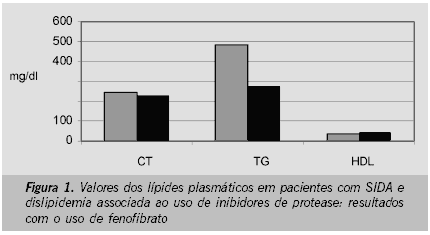Lipid alterations can be observed early among patients with AIDS disease. Commonly, these lipid abnormalities include low HDL-C and modest increase in triglyceride plasma levels. Highly Active Anti-Retroviral Therapy (HAART) in these patients may aggravate the dyslipidemia, with notable increases in triglycerides as well as in LDL-C. There are several mechanisms proposed to explain the mixed hyperlipidemia observed in these subjects, including different steps in lipid metabolism. The importance of the treatment of dyslipidemia became evident with the increased life expectancy and reports of cardiovascular complications in these individuals. There is an insulin resistance state in patients with AIDS disease under treatment with HAART, who present with lypodistrophy, hypertriglyceridemia, low levels of HDL-C. Antiretroviral drugs are metabolized by CYP P450 3A4 and interactions with some statins, especially with simvastatin are expected to occur. Treatment with lipid-lowering agents should be based on lipid profile and coronary risk. For hypertriglyceridemias, fibrates (mainly fenofibrate or bezafibrate) should be the drugs of choice, as well as statins (mainly pravastatin). Combined treatment using fibrates plus statins are recommended for severe mixed hyperlipidemias under very close monitoring for adverse effects.
AIDS; HAART; dyslipidemia


